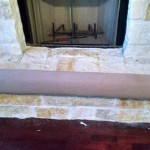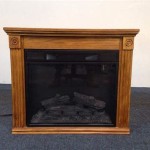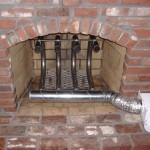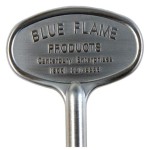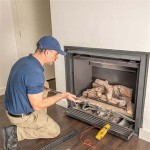Installing a Television Above a Fireplace: A Comprehensive Guide
Mounting a television above a fireplace is a popular design choice, offering a streamlined and visually appealing focal point in living spaces. However, this installation presents specific challenges that require careful consideration to ensure both safety and optimal viewing experience. This article provides a detailed guide to the process, addressing key factors, necessary preparations, and step-by-step instructions.
Assessing Fireplace Heat Output and Television Heat Tolerance
The primary concern when installing a television above a fireplace is heat exposure. Excessive heat can damage the television's internal components, shortening its lifespan or causing complete failure. Before proceeding, it is crucial to assess the fireplace's heat output and the television's heat tolerance.
Different types of fireplaces generate varying amounts of heat. Gas fireplaces typically produce less heat than wood-burning fireplaces. Electric fireplaces generate heat differently and might require different considerations. Determine the type of fireplace and its BTU (British Thermal Unit) rating, a measure of its heat output. Consult the fireplace manufacturer's specifications for recommended clearances to combustible materials.
The television's manufacturer's specifications will detail its recommended operating temperature range. This information is essential for determining whether the location above the fireplace is suitable. If the distance between the fireplace and the intended television mounting location is insufficient to maintain a safe temperature, alternative placement options should be explored. Consider using a mantel shelf to deflect heat upwards and away from the television. The depth of the mantel should be sufficient to provide adequate heat shielding.
Consider using temperature sensors or thermometers placed above the fireplace during peak fireplace operation. Monitoring the temperature over a period of time will provide a more accurate assessment of the potential heat exposure to the television. If the temperature consistently exceeds the television's safe operating range, installation above the fireplace is not advisable.
Preparing for the Installation: Tools, Materials, and Safety Precautions
Proper preparation is essential for a successful and safe television installation. This involves gathering the necessary tools and materials, and implementing appropriate safety precautions. Begin by disconnecting the power to the fireplace circuit breaker to eliminate the risk of electrical shock during the installation process.
Essential tools include a stud finder, drill with various drill bits, level, measuring tape, pencil, socket wrench, and a screwdriver set. A wire fish tape or coat hanger can be useful for routing cables through the wall. Safety glasses and gloves are recommended to protect against debris and sharp edges.
The appropriate television mounting bracket is crucial. Choose a bracket specifically designed for the television's size and weight. Consider a tilting mount to adjust the viewing angle and minimize glare. Ensure the bracket is compatible with the wall's construction. If mounting to drywall, use appropriate drywall anchors or mount directly to wall studs. If mounting to a brick or stone fireplace, use masonry drill bits and anchors designed for those materials.
Gather the necessary cables for connecting the television to other devices, such as HDMI cables, coaxial cables, and power cords. Purchase cable management solutions, such as cable ties or cable conduits, to keep the wiring organized and concealed.
Prior to drilling or cutting into the wall, verify the location of electrical wiring, plumbing, and gas lines to avoid accidental damage. Use a stud finder with a wire detection function to identify these potential hazards. If unsure, consult a qualified electrician or plumber.
Step-by-Step Installation Process: Mounting the Television
Once the preparations are complete, the installation process can begin. The following steps provide a general guideline; always refer to the specific instructions provided with the television mount and the television itself.
1.
Locate Wall Studs:
Use a stud finder to identify the location of wall studs behind the drywall. Mark the stud locations with a pencil. The television mount should ideally be secured to at least one stud for maximum stability. If studs are not available in the desired location, use appropriate drywall anchors designed to support the weight of the television and mount.2.
Attach Mounting Bracket to Wall:
Position the mounting bracket on the wall, aligning it with the marked stud locations. Use a level to ensure the bracket is perfectly horizontal. Mark the locations for the mounting holes. Drill pilot holes at the marked locations, using a drill bit appropriate for the wall material. Secure the bracket to the wall using lag bolts or screws, ensuring they are tightened securely.3.
Attach Mounting Arms to Television:
Attach the mounting arms to the back of the television, following the instructions provided with the television mount. Ensure the arms are securely attached and properly aligned.4.
Mount Television to Bracket:
Carefully lift the television and align the mounting arms with the bracket on the wall. Secure the television to the bracket using the appropriate screws or locking mechanisms. Ensure the television is securely attached and stable.5.
Connect Cables and Manage Wires:
Connect all necessary cables to the television, such as HDMI cables, coaxial cables, and power cords. Use cable ties or cable conduits to keep the wiring organized and concealed. Route the cables through the wall using a wire fish tape or coat hanger, if necessary. Consider installing a power outlet behind the television to avoid unsightly cords. Ensure all connections are secure and properly insulated.6.
Test and Adjust:
Once the television is mounted and wired, turn it on and test all functions. Adjust the viewing angle of the television by tilting the mount, if necessary. Verify that all cables are properly connected and that the picture and sound quality are satisfactory.7.
Concealing Wires:
In an aesthetically pleasing installation, wire concealment is important. Several options exist. Running the wires and cables in-wall between the TV and components below is the cleanest look, yet requires additional drywall work and optionally permits. Another option includes attaching a paintable wire molding to the wall. Wire molding provides a channel to run wires and is simpler to install.
Can I Mount My Tv Above The Fireplace

Can I Mount My Tv Above The Fireplace

Can I Mount A Tv Over My Fireplace Warming Trends

ᑕ❶ᑐ What To Consider Before Mounting A Tv Above Fireplace

Putting A Tv Above The Fireplace May Not Be Such Bad Idea After All

3 Tips For Installing A Tv Over Your Fireplace

Your Tv Doesn T Belong Over The Fireplace Cnet

Pros And Cons Of Mounting Your Tv Over Fireplace Vancouver Gas Fireplaces

How To Hang A Tv Over Fireplace

Safely Mount A Tv Above An Electric Fireplace Touchstone Home S Inc
Related Posts

